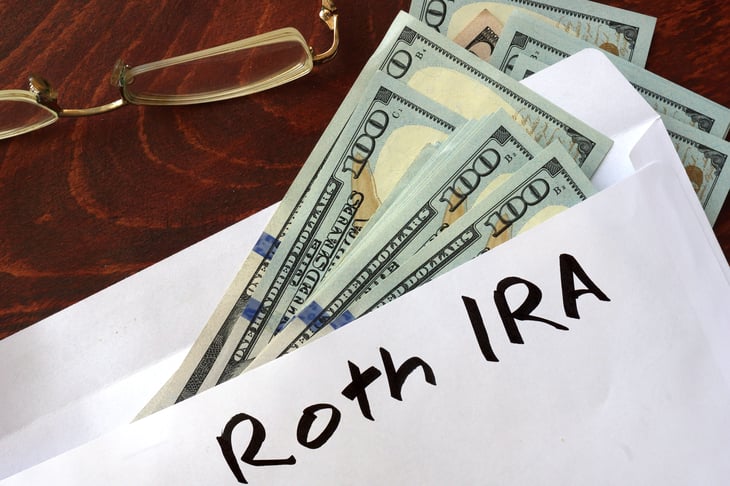
If you are looking for a fast way to lower your tax bill this spring, the federal government offers several legal ways to do so.
Deadlines for most tax breaks each year fall on Dec. 31. But there are some key exceptions that you can take advantage of right up until Tax Day.
Here are some tax-advantaged accounts that allow you some extra time to make contributions and lower your tax bill — plus one type of account for which you get extra time to fix a big mistake.
1. Traditional IRAs

You can still contribute to your traditional IRA for 2023 — usually until April 15 — and that can reduce your taxes on the tax return you file this year.
These accounts are great for those looking for a tax-advantaged way to save for retirement. Contribution limits for 2023 are $6,500 plus another $1,000 for those who are 50 or older. For the 2024 tax year, for which your return is due in April 2025, the limit has been increased to $7,000 for workers younger than 50 and $8,000 for those age 50 and older.
As with all the accounts on this list, you must designate that your contribution is for the 2023 tax year rather than 2024 if you contribute between Jan. 1 and Tax Day.
2. Roth IRAs

You also have more time to contribute to a Roth IRA for 2023. Unlike with a traditional IRA, your contribution to a Roth will not lower your taxes this year. However, the contribution will continue to grow and will be free of taxes for the rest of your life.
The contribution limits for a Roth IRA are the same as those for a traditional IRA.
3. Spousal IRAs

A lot of people don’t realize that a spouse who doesn’t have a job can still make contributions to an IRA.
Normally, you need to earn income during the calendar year to make a contribution to an IRA. But the IRS makes an exception for married couples.
If your spouse does not work, he or she can still contribute to an IRA as long as you are married and plan to file a joint tax return.
Despite the name, the spousal IRA is not a different type of IRA. The spouse who does not work will contribute to a traditional IRA or Roth IRA, just like anyone else. That means all the IRA rules apply to a spousal IRA.
Learn more about spousal IRAs in “8 Key Steps To Planning for Retirement as a Couple.”
4. SEP IRAs

A Simplified Employee Pension IRA, or SEP IRA, is a type of retirement plan for self-employed people and small-business owners. If you have this kind of account, you can still make 2023 contributions up until the due date of your return, including extensions. The IRS explains:
“You must deposit contributions for a year by the due date (including extensions) for filing your federal income tax return for the year. If you obtain an extension for filing your tax return, you have until the end of that extension period to deposit the contribution, regardless of when you actually file the return.”
SEP IRA contribution limits for 2023 are 25% of compensation or $66,000, whichever is less. For the 2024 tax year, the maximum contribution rises to $69,000.
5. Health savings accounts

Health savings accounts — more commonly known as HSAs — offer a tax-advantaged way to save for health care expenses. Contributions for 2023 can be made all the way up to April 15, 2024.
Contribution limits for 2023 are $3,850 for individuals and $7,750 for families. For 2024, you can contribute up to $4,150 if you have self-only coverage or $8,300 if you have a family coverage. Either way, you’ll need an eligible high-deductible health insurance plan to open and contribute to an HSA.
HSAs also offer a great planning tool for your golden years. For more, read “5 Reasons This Is the Best Type of Retirement Account.”
6. Archer medical savings accounts

Archer medical savings accounts have sort of gone the way of the dodo. Since the end of 2007, you have not been allowed to open a new version of these accounts which have largely given way to HSAs.
However, if you still have one of these old accounts, you can contribute to them through April 15, 2024. See the instructions for IRS Form 8853 for details.
7. Coverdell education savings accounts

A Coverdell education savings account offers a way to save for college expenses that has more flexibility than a 529 plan.
According to the IRS, “total contribution to all accounts on behalf of a beneficiary in any year can’t exceed $2,000.” The deadline for contributions is April 15.
Bonus deadline: Excess contribution withdrawals

Occasionally, people accidentally contribute more to IRAs and HSAs than they legally should. The IRS gives folks time to fix this error by withdrawing any excess contributions so they can avoid penalties.
The deadline for such fixes usually is the due date of your tax return.





Add a Comment
Our Policy: We welcome relevant and respectful comments in order to foster healthy and informative discussions. All other comments may be removed. Comments with links are automatically held for moderation.